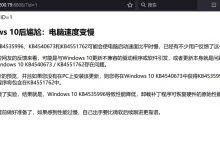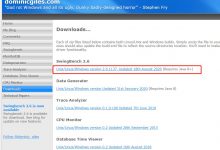注意出错:1.写sql语句时注意:返回的时*还是某一列1.尾部的分号问题;1.游标:cursor cr(10) 记得在打开游标操作时也写上cr(10)1.存储函数/存储过程: 有返回值或者有out输出时;记得在sql语句上写into赋值
小结:1.存储过程/存储函数:当
1.视图
---视图---视图的概念:视图就是提供一个查询的窗口,所有数据来自于原表。---查询语句创建表create table emp as select * from scott.emp;--复制表select * from emp;---创建视图【必须有dba权限】create view v_emp as select ename, job from emp;---查询视图select * from v_emp;---修改视图[不推荐]update v_emp set job=\'CLERK\' where ename=\'ALLEN\';commit;---创建只读视图create view v_emp1 as select ename, job from emp with read only;---视图的作用?---第一:视图可以屏蔽掉一些敏感字段。---第二:保证总部和分部数据及时统一。
2.索引
---索引--索引的概念:索引就是在表的列上构建一个二叉树----达到大幅度提高查询效率的目的,但是索引会影响增删改的效率。---单列索引---创建单列索引create index idx_ename on emp(ename);---单列索引触发规则,条件必须是索引列中的原始值。---单行函数,模糊查询,都会影响索引的触发。select * from emp where ename=\'SCOTT\'---复合索引---创建复合索引create index idx_enamejob on emp(ename, job);---复合索引中第一列为优先检索列---如果要触发复合索引,必须包含有优先检索列中的原始值。select * from emp where ename=\'SCOTT\' and job=\'xx\';---触发复合索引select * from emp where ename=\'SCOTT\' or job=\'xx\';---不触发索引select * from emp where ename=\'SCOTT\';---触发单列索引。
3.pl/sql编程语言
4.声明
---pl/sql编程语言---pl/sql编程语言是对sql语言的扩展,使得sql语言具有过程化编程的特性。---pl/sql编程语言比一般的过程化编程语言,更加灵活高效。---pl/sql编程语言主要用来编写存储过程和存储函数等。---声明方法---赋值操作可以使用:=也可以使用into查询语句赋值declarei number(2) := 10;s varchar2(10) := \'小明\';ena emp.ename%type;---引用型变量emprow emp%rowtype;---记录型变量begindbms_output.put_line(i);dbms_output.put_line(s);select ename into ena from emp where empno = 7788;dbms_output.put_line(ena);select * into emprow from emp where empno = 7788;dbms_output.put_line(emprow.ename || \'的工作为:\' || emprow.job);end;
5.if判断
---pl/sql中的if判断---输入小于18的数字,输出未成年---输入大于18小于40的数字,输出中年人---输入大于40的数字,输出老年人declarei number(3) := ⅈbeginif i<18 thendbms_output.put_line(\'未成年\');elsif i<40 thendbms_output.put_line(\'中年人\');elsedbms_output.put_line(\'老年人\');end if;end;
6.loop循环
---pl/sql中的loop循环---用三种方式输出1到10是个数字---while循环declarei number(2) := 1;beginwhile i<11 loopdbms_output.put_line(i);i := i+1;end loop;end;---exit循环declarei number(2) := 1;beginloopexit when i>10;dbms_output.put_line(i);i := i+1;end loop;end;---for循环declarebeginfor i in 1..10 loopdbms_output.put_line(i);end loop;end;
6.游标
---游标:可以存放多个对象,多行记录。---输出emp表中所有员工的姓名declarecursor c1 is select * from emp;emprow emp%rowtype;beginopen c1;loopfetch c1 into emprow;exit when c1%notfound;dbms_output.put_line(emprow.ename);end loop;close c1;end;-----给指定部门员工涨工资declarecursor c2(eno emp.deptno%type)is select empno from emp where deptno = eno;en emp.empno%type;beginopen c2(10);loopfetch c2 into en;exit when c2%notfound;update emp set sal=sal+100 where empno=en;commit;end loop;close c2;end;----查询10号部门员工信息select * from emp where deptno = 10;
7.存储过程
---存储过程--存储过程:存储过程就是提前已经编译好的一段pl/sql语言,放置在数据库端--------可以直接被调用。这一段pl/sql一般都是固定步骤的业务。----给指定员工涨100块钱create or replace procedure p1(eno emp.empno%type)isbeginupdate emp set sal=sal+100 where empno = eno;commit;end;select * from emp where empno = 7788;----测试p1declarebeginp1(7788);end;
8.存储函数
----通过存储函数实现计算指定员工的年薪----存储过程和存储函数的参数都不能带长度----存储函数的返回值类型不能带长度create or replace function f_yearsal(eno emp.empno%type) return numberiss number(10);beginselect sal*12+nvl(comm, 0) into s from emp where empno = eno;return s;end;----测试f_yearsal----存储函数在调用的时候,返回值需要接收。declares number(10);begins := f_yearsal(7788);dbms_output.put_line(s);end;
9.out
---out类型参数如何使用---使用存储过程来算年薪create or replace procedure p_yearsal(eno emp.empno%type, yearsal out number)iss number(10);c emp.comm%type;beginselect sal*12, nvl(comm, 0) into s, c from emp where empno = eno;yearsal := s+c;end;---测试p_yearsaldeclareyearsal number(10);beginp_yearsal(7788, yearsal);dbms_output.put_line(yearsal);end;----in和out类型参数的区别是什么?---凡是涉及到into查询语句赋值或者:=赋值操作的参数,都必须使用out来修饰。
10.存储过程/存储函数区别
---存储过程和存储函数的区别---语法区别:关键字不一样,------------存储函数比存储过程多了两个return。---本质区别:存储函数有返回值,而存储过程没有返回值。----------如果存储过程想实现有返回值的业务,我们就必须使用out类型的参数。----------即便是存储过程使用了out类型的参数,起本质也不是真的有了返回值,----------而是在存储过程内部给out类型参数赋值,在执行完毕后,我们直接拿到输出类型参数的值。----我们可以使用存储函数有返回值的特性,来自定义函数。----而存储过程不能用来自定义函数。----案例需求:查询出员工姓名,员工所在部门名称。----案例准备工作:把scott用户下的dept表复制到当前用户下。create table dept as select * from scott.dept;----使用传统方式来实现案例需求select e.ename, d.dnamefrom emp e, dept dwhere e.deptno=d.deptno;----使用存储函数来实现提供一个部门编号,输出一个部门名称。create or replace function fdna(dno dept.deptno%type) return dept.dname%typeisdna dept.dname%type;beginselect dname into dna from dept where deptno = dno;return dna;end;---使用fdna存储函数来实现案例需求:查询出员工姓名,员工所在部门名称。select e.ename, fdna(e.deptno)from emp e;
11.触发器
---触发器,就是制定一个规则,在我们做增删改操作的时候,----只要满足该规则,自动触发,无需调用。----语句级触发器:不包含有for each row的触发器。----行级触发器:包含有for each row的就是行级触发器。-----------加for each row是为了使用:old或者:new对象或者一行记录。
语句触发器
---语句级触发器----插入一条记录,输出一个新员工入职create or replace trigger t1afterinserton persondeclarebegindbms_output.put_line(\'一个新员工入职\');end;---触发t1insert into person values (1, \'小红\');commit;select * from person;
行级触发器
---行级别触发器---不能给员工降薪---raise_application_error(-20001~-20999之间, \'错误提示信息\');create or replace trigger t2beforeupdateon empfor each rowdeclarebeginif :old.sal>:new.sal thenraise_application_error(-20001, \'不能给员工降薪\');end if;end;----触发t2select * from emp where empno = 7788;update emp set sal=sal-1 where empno = 7788;commit;
触发器---主键自增长
----触发器实现主键自增。【行级触发器】---分析:在用户做插入操作的之前,拿到即将插入的数据,------给该数据中的主键列赋值。create or replace trigger auidbeforeinserton personfor each rowdeclarebeginselect s_person.nextval into :new.pid from dual;end;--查询person表数据select * from person;---使用auid实现主键自增insert into person (pname) values (\'a\');commit;insert into person values (1, \'b\');commit;
版本
----oracle10g ojdbc14.jar----oracle11g ojdbc6.jar
 爱站程序员基地
爱站程序员基地


